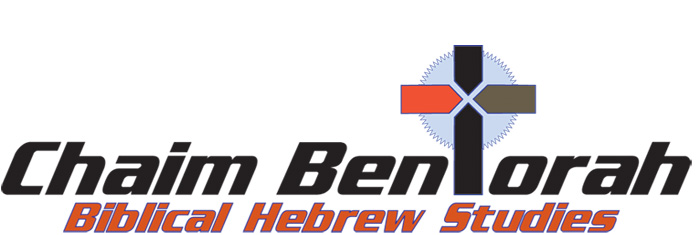Good Evening Yamon Ki Yesepar;
Isaiah 7:11: “Ask of thee a sign of the Lord they God; ask it either in the depth, or in the height above?”
God spoke to Ahaz through His prophet saying: “Ask.” The Hebrew word is she’ol which means to consult, interrogate. This is followed with a methegh connecting a lamed and kap indicating that Ahaz was to consult for himself . This methegh clearly says that Ahaz is not asking God for a sign but he is to consult for himself a sign (‘oth – letter).
If that is not confusing enough there is a separable pronoun used before the name Jehovah. In other words this sign is going to bring a message from Jehovah. Even more confusing is that God tells Ahaz to ask either in the depth or the height. What the blazes does that mean? Then in the next verse Ahaz says that he will not consult nor will he tempt the Lord.
Does any of this make sense? I mean if God told me to ask him for a sign, I would surely ask, wouldn’t you? What was Ahaz’s problem?
The sages teach that when God told Ahaz to ask for himself a sign, He was telling Ahaz to consult an oracle. Yes, this borders on divination, which in Deuteronomy 18:10-13 is strictly condemned. Such practices carry stiff penalties and Ahaz was not about to press his luck, which may explain why he refused such consultation and thus would not “tempt” God.
Yet, why would God ask him to seek an oracle if it was so strictly forbidden. In Exodus28:15-20 we are introduced to the Urim and Thummim. Is that not divination? How about Joshua 18:10 when Joshua cast lots before the Lord? Sounds like divination to me? Did not Gideon dabble a little in divination when he laid out a fleece?
Actually, there is a definite line between divination and signs. Except for those who were not righteous, as Ahaz, that line gets a little fuzzy and old Ahaz was not about to press his luck and end up seeking a divination rather than a sign and have all those terrible penalties befall him.
The sages teach that Scripture gives two signs. The sign of the depth. This is from a human standpoint, the casting of lots as Joshua or the fleece of wool like Gideon. Actually, it was not the fleece of wool that was the sign. The word fleece (gazath) means to cut and the word wool (samara) has the idea of a bristle or stiff type of wool. Actually, the sages teach that Gideon cut the wool into one or more Hebrew letters. Another form of this sign was to randomly open a scroll and drop your yad on a specific letter or word. Then you have the sign of the heights, this is a reference to the Urim and Thummim, that only the high priest had access to.
What made Ahaz skittish about seeking these signs was that by his time there had developed many abuses to this method of seeking God’s guidance that were not signs but forms of divination. Some of these practices involved, shooting an arrow into the air and observing it’s patterns and seeing if it made the shape of a Hebrew letter. Checking patterns in water of a goblet to see if it formed a Hebrew letter, or tossing bones and observing the patterns for Hebrew letters or reading palms and trying to detect Hebrew letters in the palm of one’s hand.
You see the word sign in Hebrew is “’oth” which really means letter. All these little “games” involve the use of Hebrew letters. The Urim and Thummim were stones on the breast plate of the High priest. When you asked a question the stones lit up. Each stone represented a Hebrew letter, sort of like a telephone pad. The fleece was laid out to formed Hebrew letters if wet the letter gave the guidance. The lots had Hebrew letters, not dots like our dice today. The ancients believed as many orthodox and Chassid Jews believe today that God dwells in each letter of the Hebrew alphabet. Each letter has it’s own personality, each letter is a representation of God, a name of God. The Hebrew letters are signs, wonders which lead to a deeper understanding of God, deeper wisdom and knowledge and that they themselves are the substance of prophecy. That is why the Jews read the Holy Scripture in it’s original language for they believe that the words carry the power of God. That is why when the scribes would copy the Torah not a letter could be missing, erased, smudged or even touch each other. If so the whole scroll was consider invalid.
So to the student who asked the question of me last week as to why Ahaz did not want a sign, I apologize for not giving you a direct answer. I was afraid you would ask a following question that I could not answer. I hope this answer is direct enough and don’t ask me the next question because I do not have an answer. That question is: “If God asked Ahaz to cast lots (the depth) or consult the Urim and Thummim (heights) why do we not have the dice with Hebrew letters to seek God guidance today?” Actually, there are orthodox and Chassidic Jews who do.
Maybe the answer is that we have the Holy Spirit in us now to give us that guidance and rather than study the mysteries of the Hebrew letters we need to focus on our relationship with the Spirit of God that lives within us.
Like some of you, I work in the financial sector and the sudden collapse of the economy has created some uncertainty for the future of my job. After doing this study I thought, just for the fun of it, I would randomly draw a card with a Hebrew letter and see if maybe there would be some guidance. I draw the “Unknown Hebrew Letter.” Quite a story behind the unknown Hebrew letter, but basically it teaches that you are to make peace with knowledge that God does not reveal to you. I would recommend like Ahaz, we not ask or tempt the Lord. Do as I say, not as I do.







Recent Comments